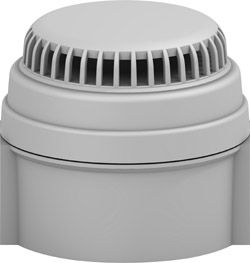
Wouldn’t life be strange without sound? Every day we hear different sounds that play a vital role in our living. They benefit our way of communication and make everything work smoother. The use of audible warning signals also assists our day to day living, and contributes to an overall smoother operation.
Overview
Warning signals can be audible as well as visual. These permit various applications, often in construction sites but can be used effectively in any industry. It is a device that anyone can hear in a busy workplace, so nothing will be missed out.
The audible signal comes in different forms, such as sirens, horns, buzzers, bells, and other various designs that produce sound. Each one delivers different types of noises, with the same purpose. They give warning to everyone to notify of a hazard before a situation worsens.
Audible warning signals are commonly installed in aviation or loading docks, as open areas do not limit the sound frequency they produce. The decibel level can be adjusted as required, for an effective warning tool.
Types of Audible Warning Signals
There are several audible warning signal devices in the market. They are versatile in application providing safety over the workplace and its workers.
Horns
Horns are usually found on any kind of vehicle. It keeps everyone on the road safer, as this sound-making device gives a warning. Some nations require adding a horn signal over a vehicle. Its sound is tolerable to the human ear and yet a powerful warning device over the years.
Sirens
While horns are used for common vehicles, sirens are often used on faster vehicles such as ambulances, fire trucks, and police cars. They are slightly louder than the horns, enough to warn a specific location.
Sirens work to give a warning when natural disasters happen. It will automatically make a sound to alert nearby individuals.
Siren alarms also work in loading bays and in managing the traffic in the facility. The device must be installed in a fixed location to easily catch possible hazards.
Buzzers
These devices are available as mechanical, piezoelectric, and electromechanical.
The electromechanical system is similar to an electric bell, however, it does not have a metal gong. It releases a buzzing sound to deliver a warning message in the workplace.
Buzzers are commonly installed on a wall or ceiling to act as a sounding board. Everyone can hear its sound to prevent further damage.
Electronic Sounders
Electronic sounders are commonly used in conjunction with alarm systems.
Alarm systems can deliver two functions – the first one is for abnormal situations, for instance, a disaster occurs. Its second function deals with the facility’s condition related to the operator’s needs. The best example is maintaining productivity and safety in the workplace by sending a timely alarm. It serves as a reminder if further assessments are necessary.
Recommended Products
Electronic Sounders
Electronic sounders deliver a versatile application. It is designed in three series, such as IAS-C, IAS-E, and IAS-T Series. This sounder also is also available with a special telephone ring feature.
Combi-AV Sounder Beacons
This is a single dual-function sounder device with an integrated beacon lamp. Pulsed and static versions of the LED units are available.
Motor Driver Sirens
This type of siren can cover long distances due to its powerful motor. It has an air-raid type of warning signal able to warn wider areas. The material is robust and yet lightweight for easy installation.
Final Words
Audible warning signals add assurance in keeping a workplace safer and more productive. Many companies depend highly on audible signals these days, as they have brought changes to how production works.
